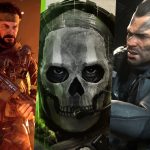If you’ve been paying attention to the gaming world lately, you might have noticed that Xbox is quietly stepping back from the handheld gaming race. Unlike Nintendo, whose portable consoles like the Game Boy and Switch have become iconic, or Sony, which tried hard with the PlayStation Vita, Microsoft has decided not to seriously pursue handheld hardware. Instead, Xbox is betting big on cloud gaming and integration with its powerful consoles and PCs.
This move might surprise some, but it makes a lot of sense when you look at the bigger picture. Handheld gaming is a tough nut to crack. It’s not just about making a smaller device that fits in your pocket; it’s about building a whole ecosystem—exclusive games, solid performance, good battery life, and a reason for players to choose it over the millions of games available on their smartphones. And let’s be honest, smartphones have already gobbled up a massive chunk of casual portable gaming. For many, it’s just easier to pull out their phone and start playing rather than carrying around a dedicated handheld.
Xbox did dip its toes in this pool, experimenting with cloud gaming on handheld devices and prototypes that could stream games anywhere. But those experiments also revealed the challenges: battery life, price points, and the question of what makes an Xbox handheld truly special. Microsoft’s strength has always been in powerful home consoles and a growing cloud gaming service, not in portable gadget hardware.
By stepping out of the handheld hardware race, Xbox is making a strategic decision to focus on what it does best: seamless, flexible gaming experiences across devices. With Xbox Cloud Gaming, players can stream hundreds of games on their phones, tablets, PCs, or consoles without needing a separate handheld device. Imagine starting a game on your Xbox, then picking up your phone and continuing on the go without missing a beat. It’s a slick, scalable idea that plays to Microsoft’s strengths in technology and ecosystem integration.
For gamers, this means more investment in cloud services and Game Pass, opening up a huge library of games to play anywhere. But it also means the dream of a dedicated Xbox handheld console—with buttons, triggers, and that familiar green branding—might not happen anytime soon. For fans who love physical handheld devices, that’s a bit of a bummer.
On a broader level, Xbox’s exit from handheld hardware development highlights a shift in the gaming industry. Dedicated portable consoles face stiff competition from mobile phones and cloud streaming, pushing companies to rethink how they deliver gaming on the go. The future of portable gaming might not be about gadgets at all but about ecosystems and connectivity powered by fast networks like 5G.
So, Xbox’s decision isn’t a retreat—it’s a smart pivot toward a future where gaming is everywhere, not tied down by hardware. The handheld race might be over for Microsoft, but the race for portable gaming dominance is just evolving. And honestly? The possibilities ahead look pretty exciting.
What do you think? Is Xbox making the right call by focusing on cloud gaming, or is it missing out on a key part of the market? Wherever you stand, it’s clear that portable gaming is changing fast—and the next few years will be fascinating to watch.



